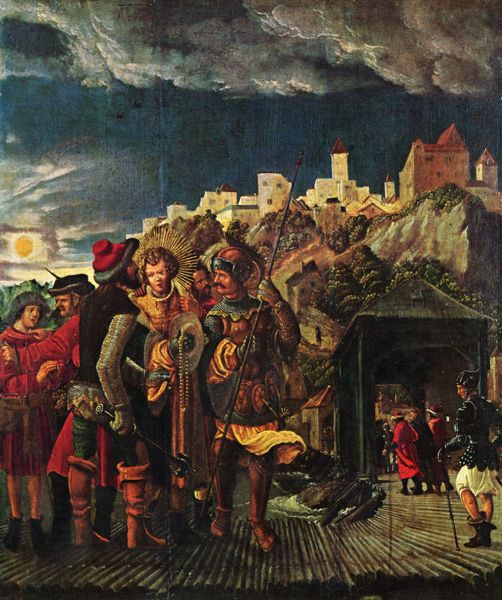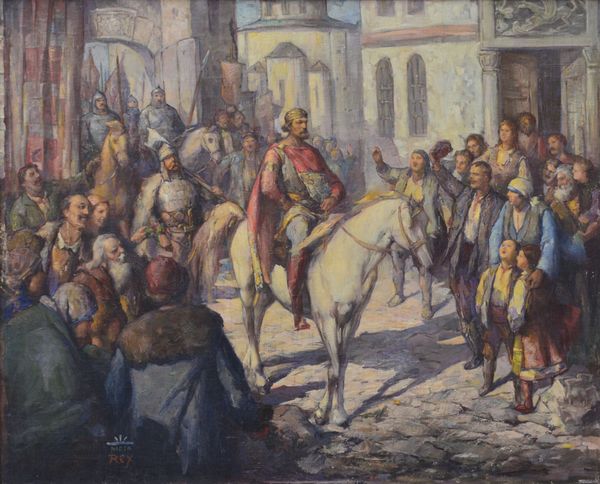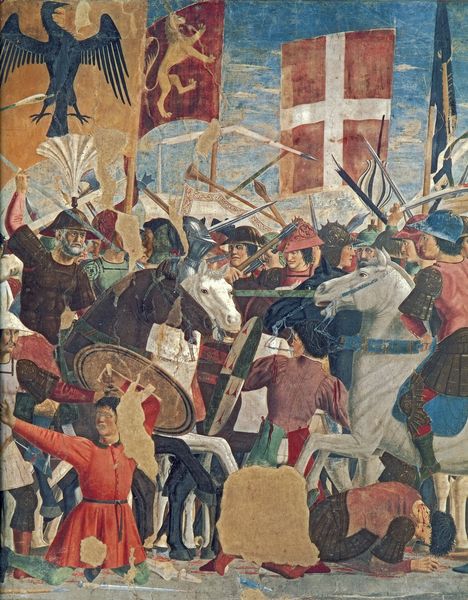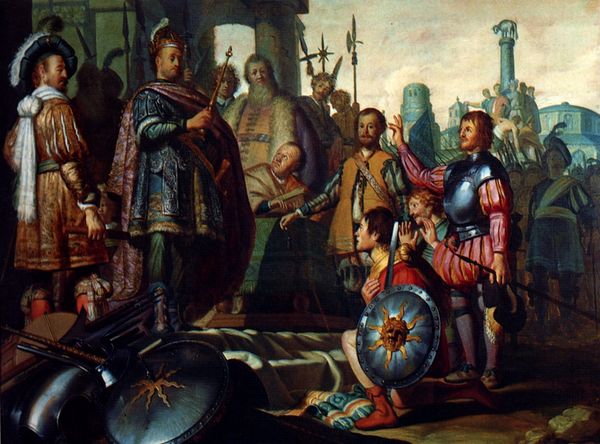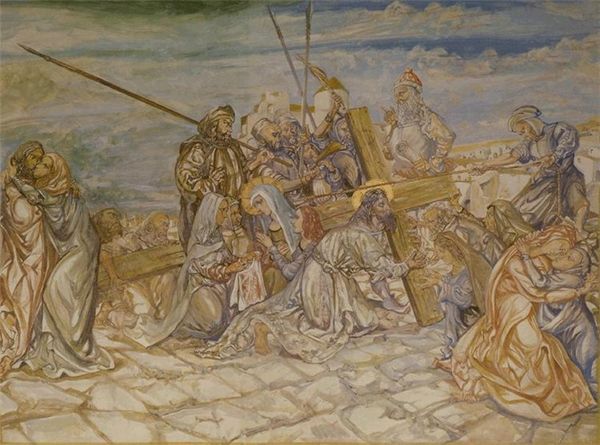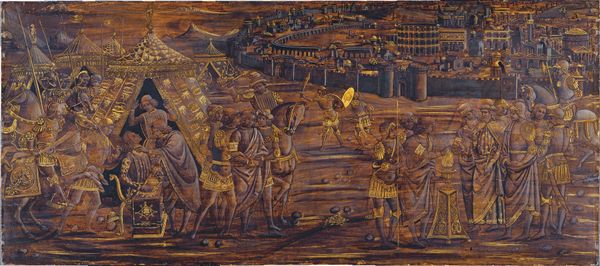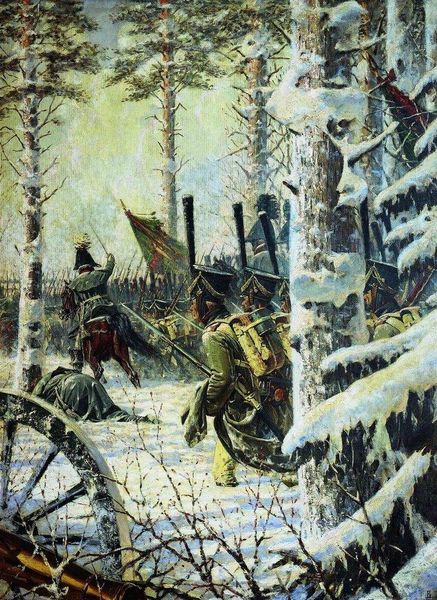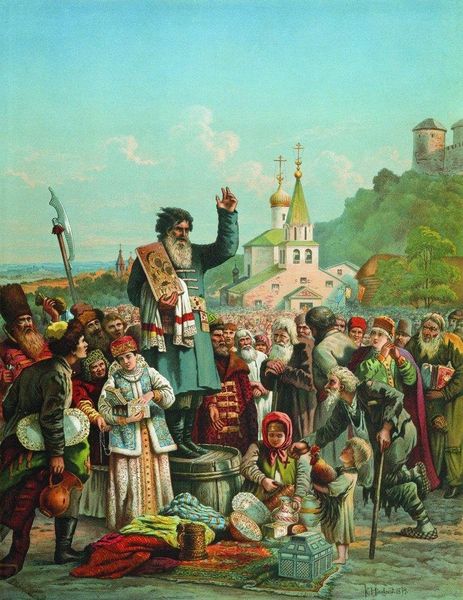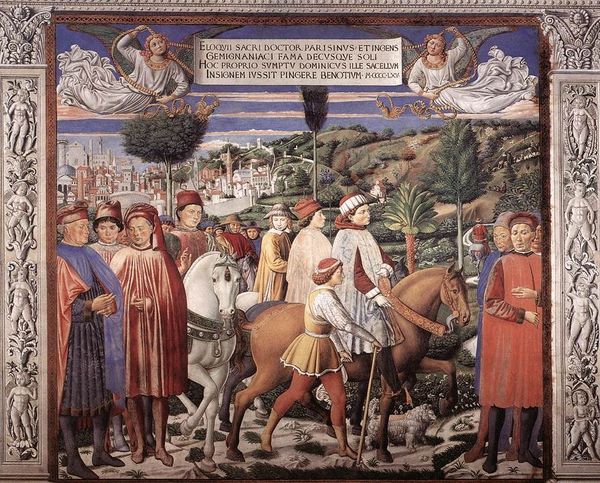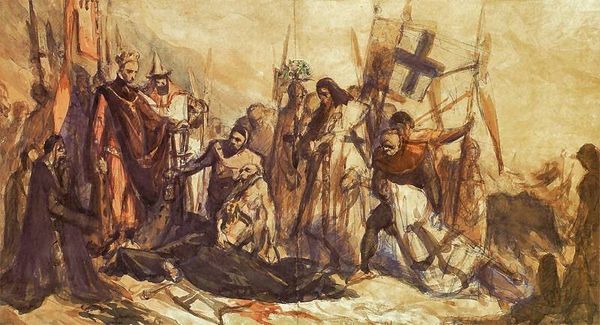
painting, oil-paint
#
portrait
#
medieval
#
painting
#
oil-paint
#
landscape
#
oil painting
#
orientalism
#
symbolism
#
russian-avant-garde
#
genre-painting
#
history-painting
Copyright: Public domain
Editor: This is "Russian Prince Collects Tribute" by Nicholas Roerich, created in 1908 using oil paint. The muted color palette and almost flattened perspective give it a sort of stylized, timeless feel, like a scene from a storybook. What strikes you most when you look at it? Curator: Note the composition's pronounced horizontality. The painting divides neatly into stacked horizontal bands – the prince and his retinue, the offerings being presented, and the lower band filled with figures bearing goods. Consider how this division contributes to a sense of order and perhaps the establishment of hierarchy within the scene. The rhythmic repetition of forms, such as the conical hats and the bundled furs, also generates a visual cadence. Do you see how these patterns guide the eye and contribute to the painting's formal structure? Editor: I do now! It's almost like the figures and their offerings create a visual rhythm, reinforcing the idea of a structured tribute process. Are those architectural elements behind the tribute-takers meant to frame the figures? Curator: Precisely. They serve not merely as background but actively participate in the overall design. The structures echo the verticality of the spears held by the prince's guard, creating a visual call-and-response. And notice the colors: a subtle range dominates. Earthy browns and whites in the landscape contrast with the oranges, reds and muted gold that denote royalty and give off an archaic look. How might that play into the narrative of power being depicted? Editor: The visual analysis gives the impression that it's about much more than the material objects. It's a statement about power, hierarchy, and a ritualistic transaction represented through these deliberate design choices. Curator: Indeed. By concentrating on its formal qualities, we access layers of meaning embedded within the structure and visual language of the artwork itself. Editor: I see it completely differently now. Looking at the piece purely through the relationships between colors, shapes and composition helped me see past the story being depicted. Thank you.
Comments
No comments
Be the first to comment and join the conversation on the ultimate creative platform.
